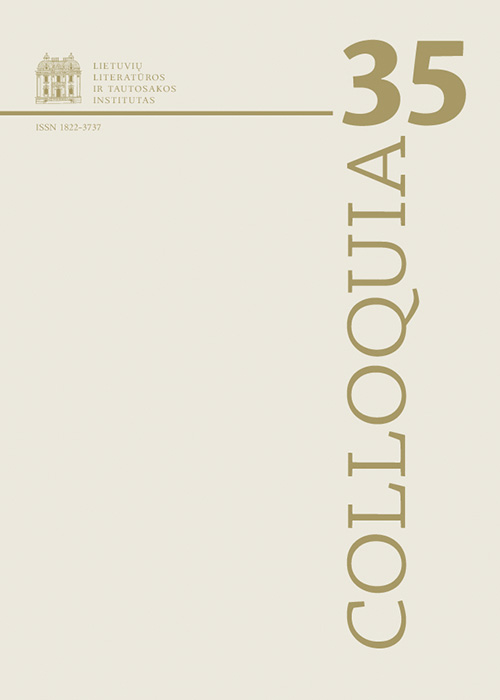Historiographic Metafiction: Structural Adaptation of Linda Hutcheon’s Theory as Strategy for Understanding the Poetics of the Historical Novel
Abstract
The author of this article discusses theoretical approaches for analyzing the contemporary historical novel. The goal of the article is to present Canadian author Linda Hutcheon’s theory of historiographic metafiction as a tool suitable for the interpretation of discursive poetics in the postmodern, as well as the modern, historical novel. Ivanauskaitė reviews Hutcheon’s interpretation of the postmodern historical novel, and then argues that this theory is an instrument that can be adapted to the study of various other types of contemporary historical prose. The article explores connections between literary and historical inter/para-texts.
Grounding the concept of historiographic metafiction in the principle of the independence (or coexistence) of literature and history allows attention to be focused on the literary aspect of historiographic metafiction – to analyze it as representation of historical and all cultural reality, and to identify its meanings by highlighting literary forms of expression. An example of this could be the metafictional poetics of irony and parody – their exclusive position and role in the rewriting (altering) of historical and literary representations.
While the concept of historiographic metafiction is fundamentally grounded in Hutcheon’s theory, its narrative content is open. The author of this article demonstrates that it can be complemented (expanded) by using, for example, the analytical methods of Gérard Genette and other narrative theorists to examine the genres and cultural articulation of different historical novels. Innovative structural adaptation of this theory is therefore possible. Moreover, the historiographic metafictional approach makes it possible to construct (create) concrete comparative methods for studying contemporary historical novels. She comes to the conclusion that, as a distinct theoretical approach for examining the contemporary historical novel (or other genres of historical prose), historiographic metafiction consists of three strata: the intranarrative, the paranarrative, and the discursive. To illustrate this, she presents an analysis of Herkus Kunčius’s novel Nepasigalėti Dušanskio (Don’t Pity Dušanskis).
